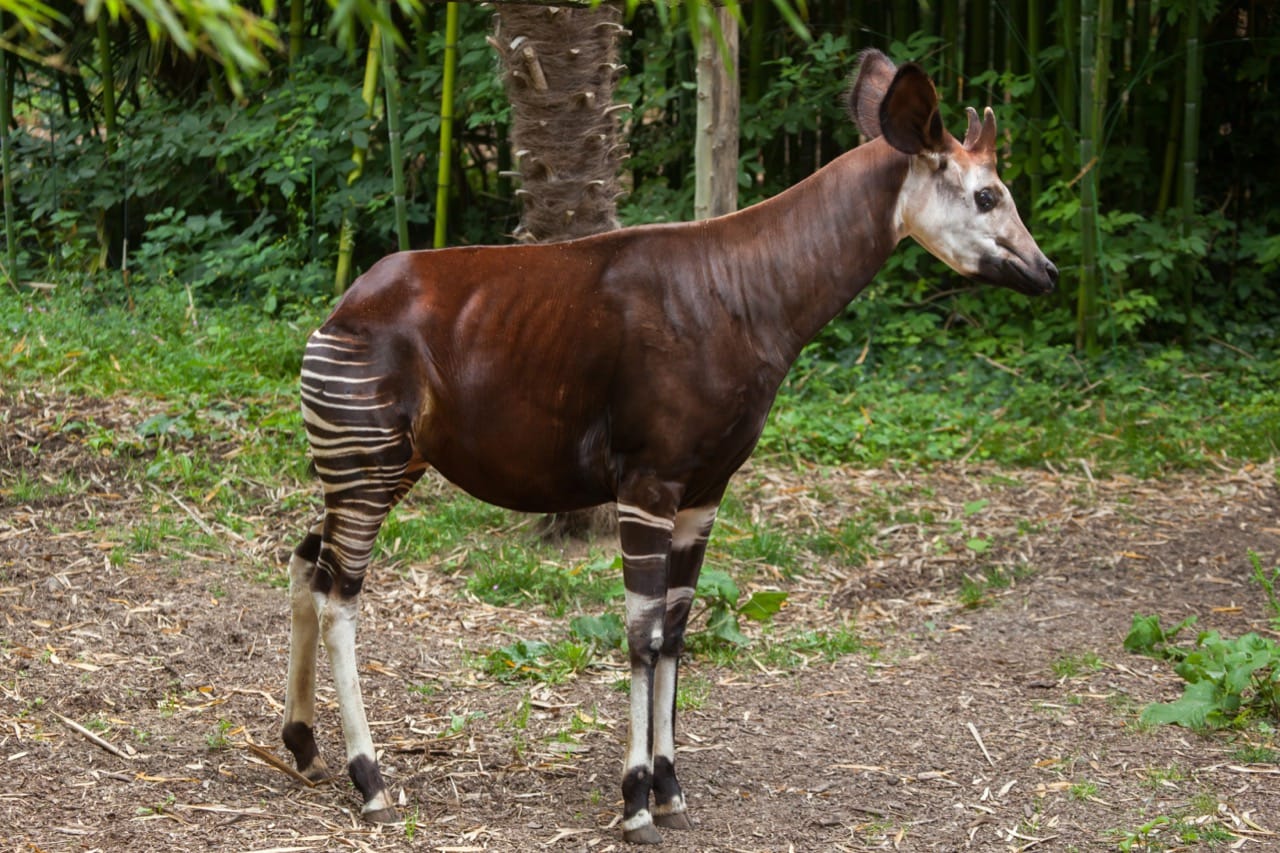In the dense rainforests of central Africa, a peculiar animal moves silently through the undergrowth. With its velvety, chocolate-brown coat interrupted by striking white stripes on its legs, the okapi (Okapia johnstoni) seems like a creature from a fairy tale. This shy and reclusive mammal, often nicknamed the “forest giraffe,” is one of the last large mammals to be discovered by science, only recognized by the Western world in the early 20th century. The okapi’s elusive nature and distinctive appearance make it a fascinating subject of study and conservation.
Characteristics / Physical Description
The okapi stands about 1.5 meters tall at the shoulder and weighs between 200 to 350 kilograms. Its body shape resembles that of its closest relative, the giraffe, though it is much smaller and lacks the long neck associated with giraffes. The okapi’s most striking feature is its leg markings, which are thought to serve as camouflage in the dappled light of its forest habitat. It also has large, flexible ears that can rotate to pick up subtle sounds in the dense forest.
Taxonomy and Classification
Scientifically classified as Okapia johnstoni, the okapi is the only member of the genus Okapia. This unique species is part of the Giraffidae family, which it shares only with its relative, the giraffe. Its classification is a testament to its distinct evolutionary path which diverged from the giraffe around 11 to 12 million years ago.
Behavior and Social Structure
Okapis are solitary creatures, with males and females coming together only to breed. They are highly territorial, with males occupying large territories that they mark and defend using scent glands located on their feet. Communication occurs through subtle sounds and scent marking rather than visual signals, which is an adaptation to their dense forest environment.
Habitat and Distribution
The okapi is endemic to the Democratic Republic of Congo, where it inhabits the dense, lowland rainforests of the Ituri Forest. This habitat is rich in biodiversity but challenging to navigate, which helps the okapi stay hidden from potential threats.
Diet and Feeding Habits
As herbivores, okapis feed on a variety of plants, including tree leaves, fruits, ferns, and fungi. They have a long, prehensile tongue, much like the giraffe’s, which allows them to strip leaves from branches and pick fruits with precision.
Breeding and Reproduction
Okapis have a gestation period of around 14 to 15 months, after which a single calf is born. Calves are nursed for up to 10 months but can start consuming solid food as early as three months. The mother keeps the calf hidden in vegetation for the first few months to protect it from predators.
Relationship with Humans
Despite their hidden lifestyle, okapis face threats from human activity, primarily habitat destruction and poaching. They are often hunted for their distinctive pelts and meat. Conservation efforts are crucial for preserving this unique species, with organizations working to protect its habitat and reduce human-wildlife conflict.
Evolutionary History
The okapi’s evolutionary lineage offers fascinating insights into the climatic and geological changes in Africa over millions of years. Its adaptations to a forest environment provide clues about the ecosystem dynamics of central Africa’s rainforests.
Use as Research Animals
While not typically used in experimental research, okapis contribute to ecological and behavioral studies that help scientists understand rainforest ecosystems. Their conservation also aids in the preservation of countless other species that share their habitat.

